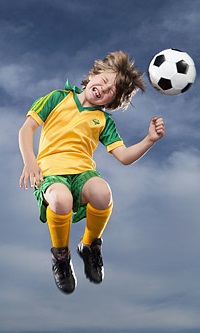Concussion complacency clear in statistics
 A new study has found children are often put back onto a sporting field after they suffer a concussion, and the trend could lead to serious long-term negative effects.
A new study has found children are often put back onto a sporting field after they suffer a concussion, and the trend could lead to serious long-term negative effects.
A survey has been conducted by Monash University medical student Harini Haran, collecting data from children who presented to the Royal Children’s Hospital paediatric emergency department at with sport-related head injury.
Almost 100 patients have been interviewed so far, with researchers from Murdoch Children’s Research Institute (MCRI) and Austin Health participating as well.
Injuries were due to Australian football (52 per cent), soccer (12 per cent), rugby (7 per cent), and other sports (29 per cent).
Most of the children aged between five and 18 years reported presented with well-known symptoms of concussion including loss of consciousness (38 per cent), disorientation (34 per cent), vomiting (20 per cent), amnesia (29 per cent) and headache (49 per cent).
However, in organised sports overall, 41 per cent did not comply with internationally recommended concussion guidelines.
Up to 27 per cent were not immediately assessed by qualified personnel and 28 per cent were allowed to return to play on the same day of their injury.
Around 91 per cent of parents and 96 per cent of patients were unaware of any concussion or return-to-play guidelines from their organisations.
International guidelines say an injured child should slowly proceed from rest, to mild exercise to full contact game play over a minimum of one week.
In a follow-up poll - 72 per cent said they followed the suggested return-to-play process.
“Despite the attempts of sports organisations to improve the management of concussions, on-field concussion management and return-to-play practices are suboptimal in sport-related head injuries,” Ms Haran said.
Data from the ongoing study has been presented at the Australasian College for Emergency Medicine's annual scientific meeting in Adelaide this week.








 Print
Print